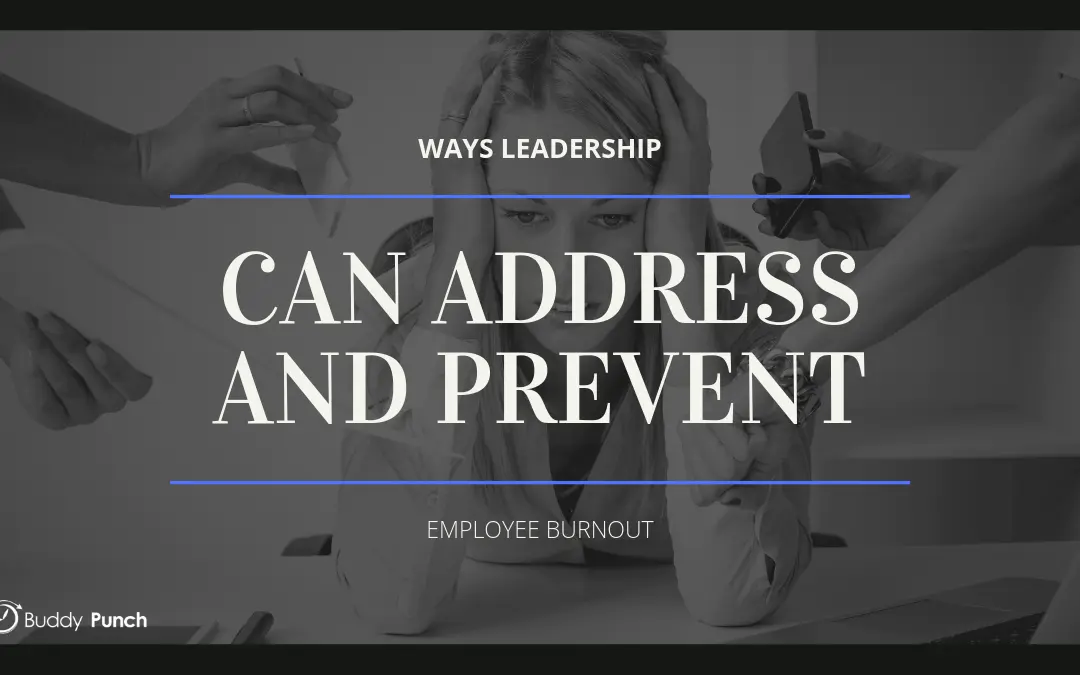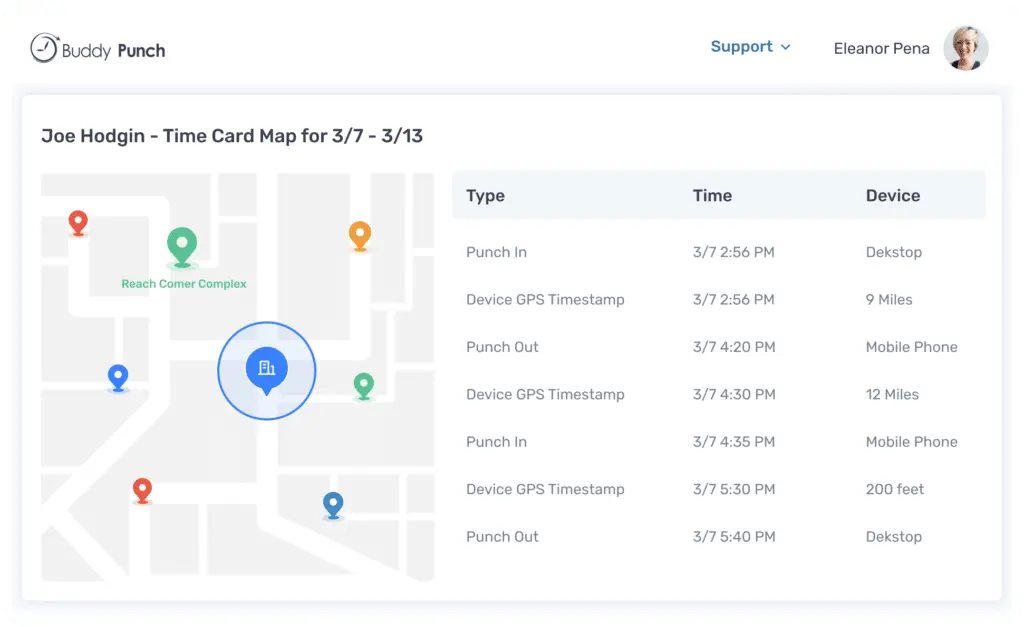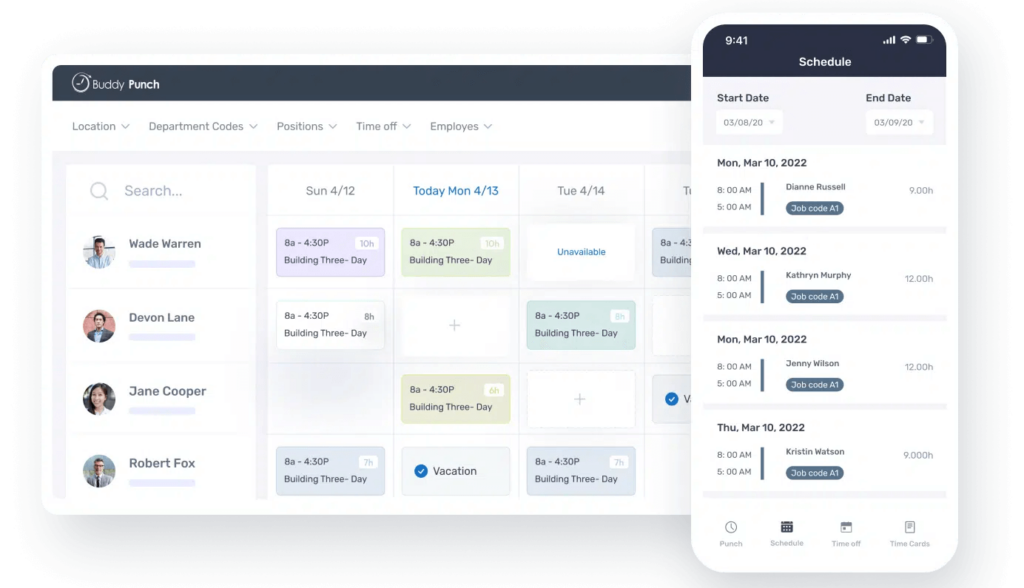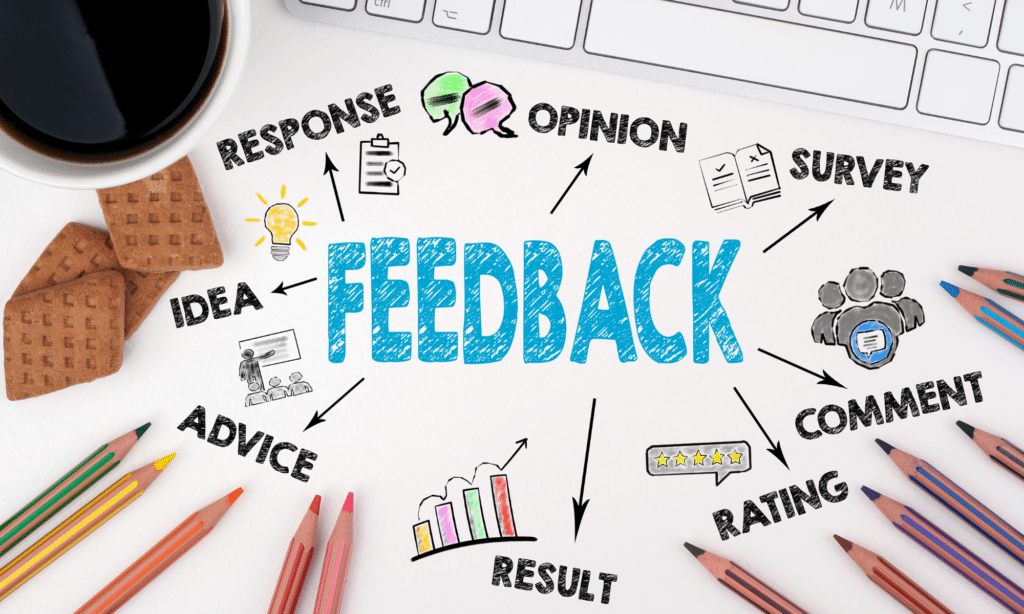Addressing Employee Burnout: Ways Leadership Can Address and Prevent Employee Burnout

Employee burnout is a prevalent issue in today’s workplaces, with around two-thirds of full-time workers admitting that they frequently experience this overwhelming sense of exhaustion.
It’s more than just the typical workplace stress or fatigue; it’s a pervasive feeling of being physically, mentally, and emotionally drained.
Burnout doesn’t discriminate; it affects employees across generations and industries, but younger workers and those in lower positions often bear the brunt of its consequences.
The causes of employee burnout are multifaceted and often intertwined, making it a complex challenge to address.
Excessive workloads, a lack of control over one’s career path, and a toxic workplace atmosphere are contributing factors.
However, one key aspect that emerges from the shadows as a significant driver of burnout is leadership, specifically poor leadership.
A year-long survey conducted in select tech companies revealed a startling revelation – almost 23% of employees cited poor leadership or management as a major cause of their burnout.
This insight underscores leadership’s critical role in creating a healthy work environment.
When leaders fail to provide adequate support, guidance, and motivation, employees feel disengaged, unsupported, and overwhelmed.
It’s essential to recognize that lower-level employees often have less control over their work and career decisions, relying on leadership to navigate the path forward.
Burnout becomes a natural consequence when leadership neglects their responsibility to nurture employee engagement and well-being.
With privilege comes responsibility, and one of the fundamental responsibilities of leadership is to prevent and address employee burnout.
Employees face unique challenges in a world where the boundaries between work and personal life have blurred.
Workaholism is often encouraged in a relentless pursuit of career advancement, disregarding the importance of a healthy work-life balance.
The pandemic further exacerbated these challenges, pushing remote workers to be on the clock far more than initially expected.
Employees have found themselves juggling work pressures, fear of layoffs, and personal life with stressed-out managers and mounting responsibilities at home.
Leadership, too, is not immune to these pressures, and this stress often trickles down to employees, creating a cycle of burnout.
When leadership blames employees for feeling overloaded or stressed, they fail to acknowledge the broader systemic issues.
Addressing employee burnout is essential for the well-being of the workforce and the overall success of a business.
Burnout leads to higher absenteeism as employees are more likely to call in sick, affecting their co-workers and the company’s bottom line.
| What is Employee Burnout? |
| Employee burnout is a pervasive phenomenon in the modern workplace, characterized by chronic physical and emotional exhaustion. While workplace stress and fatigue are common, burnout goes beyond these transient experiences. It is a persistent feeling of being drained, both physically and mentally, resulting from prolonged exposure to high levels of stress and an overwhelming workload. |
Inefficacy Or Reduced Professional Efficacy

One key aspect distinguishing burnout is the sense of inefficacy or reduced professional efficacy.
Employees experiencing burnout often perceive a reduced ability to meet the demands of their jobs, and they may become cynical or detached from their work.
This affects individual well-being and has far-reaching consequences for organizational productivity and morale.
Job burnout can lead to higher levels of employee turnover, as overworked and stressed employees are more likely to seek alternative job opportunities.
Moreover, the healthcare of the workforce can be seriously impacted, as burnout symptoms may include various physical and mental health issues, ultimately resulting in increased employee stress.
Burnout does not discriminate based on age, position, or industry.
To address this critical issue, organizations must consider implementing wellness programs and employee experience enhancements that focus on building resilience and reducing employee stress.
In doing so, they can provide valuable perks to their employees, ultimately leading to a more positive workplace atmosphere.
According to the American Psychological Association, unfair treatment and excessive work schedules are common contributors to employee burnout.
Respondents to workplace surveys frequently report feeling a mental distance from their tasks due to stress and overwork, emphasizing the urgent need for effective solutions to tackle employee mental health and well-being.
Negative Effects of Workplace Burnout

Employee burnout affects the employee, but it also affects the company as a whole.
Over-stressed and over-worked workers tend to experience more health-related problems, which in turn results in more sick days and ultimately can result in higher insurance premiums for everyone.
Then, there are the co-workers of this employee to consider.
People who are stressed and over-worked tend to lash out at those around them, straining everyone’s attitudes and increasing the overall stress in everyone’s work environment.
This leads to lower productivity and a higher turnover rate within the company.
Some other impacts that severe burnout can cause are:
- Self-medication with alcohol or other substances
- Sarcasm and negativity
- Debilitating self-doubt
- Clinical depression
- Reduced job satisfaction
- Increased risk of accidents and errors
- Poor workplace morale
- Communication breakdown
How To Identify Burnout In The Workplace?
Recognizing the signs of employee burnout is crucial for leadership in preventing and addressing this pervasive issue.
While the manifestations of burnout can vary from person to person, some common indicators include:
Physical and Emotional Exhaustion
Employees suffering from burnout often feel drained, both physically and emotionally.
They may report feeling constantly tired, even after a full night’s sleep, and experience emotional fatigue.
Cynicism and Detachment
Burnout can lead to a negative and cynical outlook towards work and colleagues.
Employees may become emotionally detached, withdrawing from their professional relationships and lacking enthusiasm.
Decreased Productivity
A drop in work performance and reduced productivity is another common signal of burnout.
Employees may struggle to complete tasks, miss deadlines, and become less engaged in their work.
Increased Absenteeism
Burnout often results in higher absenteeism rates.
Employees may frequently call in sick, citing physical illnesses as a way to cope with their mental and emotional exhaustion.
Causes of Workplace Burnout
Understanding the causes of burnout in the workplace is essential for leadership to address these issues proactively. Several contributing factors include:
Excessive Workloads
Employees are more likely to experience burnout when they are consistently overworked, faced with unrealistic workloads, or pressured to work long hours without sufficient breaks.
Lack of Control
Employees who feel they have minimal control over their work, decision-making processes, or career development are at a higher risk of burnout.
Micromanagement and limited autonomy can exacerbate these feelings.
Toxic Work Environment
A hostile, unsupportive, or unhealthy workplace culture can contribute to burnout.
Factors such as conflict, harassment, or a lack of camaraderie can negatively impact employees’ mental well-being.
Inadequate Leadership
Poor leadership and management play a significant role in employee burnout.
Employees who lack trust in their leaders or feel unsupported are more likely to experience burnout.
Leadership’s ability to create a healthy work environment is crucial in preventing burnout.
Blurred Work-Life Boundaries
Blurring boundaries between work and personal life, exacerbated by factors like remote work and technological connectivity, can lead to constant on-the-clock expectations, resulting in burnout.
Leaders must be vigilant in identifying these signs and addressing the underlying causes to create a healthier, more supportive work environment.
Signs of Employee Burnout: Burnout Symptoms

Before workplace burnout can be addressed; however, management must first know how to identify an employee who is coming dangerously close to accurately or has already passed this point.
There are several common indicators or behaviours that warn of possible burnout coming.
An insightful and diligent manager can recognize changes in their employees’ behaviour that may indicate a pending burnout.
While these results are not always due to burnout, it is essential to keep a watch for the following:
- Reduced efficiency
- Reduced energy
- Less motivation
- Increased workplace errors
- Fatigue
- Headaches
- Irritability
- Easily frustrated
- Suspiciousness
If you notice a prolonged presence of these symptoms or a sharp rise (or decrease) in them, take the time to talk to your employee to get to the bottom of it.
Often, these are signs that an employee has a medical or personal problem spilling over into the workplace, not workplace burnout. It is important to check with your employee before assuming the worst.
Buddy Punch as a Solution for Employee Well-Being

In the pursuit of addressing and preventing employee burnout, leaders need robust tools to support their efforts.
Buddy Punch stands out as an effective solution that simplifies various aspects of workforce management and significantly contributes to employee well-being.
Streamlined Time Tracking, Scheduling, and Payroll

Buddy Punch offers a comprehensive platform that streamlines time tracking, scheduling, and payroll processes.
With intuitive features, it empowers leaders to efficiently manage work hours and assignments, minimizing the risk of employees feeling overwhelmed due to chaotic schedules.
The tool’s time tracking capabilities also ensure accurate compensation, which is essential for employee satisfaction and well-being.
Advanced GPS Tracking for Enhanced Accountability and Well-Being

One standout feature of Buddy Punch is its advanced GPS tracking. This feature enhances employee accountability while simultaneously promoting their well-being.
It allows leadership to monitor remote work, ensuring that employees are staying on track without invading their privacy.
The knowledge that their work is tracked can provide a sense of security and structure for employees, helping to reduce burnout by avoiding blurred boundaries between work and personal life.
By leveraging Buddy Punch, leadership can simplify workforce management tasks and create an environment that fosters employee well-being.
The combination of efficient time tracking, scheduling, and advanced GPS tracking features makes
Buddy Punch an invaluable tool in the arsenal of strategies to combat burnout and ensure a healthier, more productive workplace.
Try Buddy Punch For Free
Leadership’s Role in Addressing Employee Burnout
Leadership, especially at the managerial level, holds a pivotal role in addressing and preventing employee burnout.
Here are key ways in which managers can contribute to creating a burnout-resistant workplace:
1. Open Communication
Managers should foster an environment of open and honest communication.
Encouraging employees to voice their concerns, share their workload, and express their challenges is fundamental in identifying burnout triggers.
2. Manage Workloads
Ensuring that employees have manageable workloads is crucial.
Managers must set realistic expectations, delegate tasks effectively, and provide necessary resources to accomplish assignments.
Avoiding the overload of any one team member is essential.
3. Promote Work-Life Balance
Leadership should actively promote work-life balance by respecting employees’ non-working hours and encouraging them to disconnect after work.
Setting clear boundaries and discouraging constant accessibility can prevent burnout.
4. Recognition and Appreciation
Recognizing employees for their hard work and accomplishments can significantly boost morale and prevent burnout.
Appreciation can be as simple as verbal recognition or more formal recognition programs.
5. Professional Development
Offering opportunities for skill development and career growth is essential.
When employees see a future within the organization, they are less likely to burn out.
Leadership can create development plans and mentorship opportunities to empower their teams.
Employee Engagement Strategies To Prevent Workplace Burnout
Boosting employee engagement plays a pivotal role in combatting burnout.
Here are some of the strategies that leadership can employ:
1. Regular Feedback
Managers should provide regular feedback and recognize employees’ contributions.
Constructive feedback helps employees grow and feel connected to their work.
2. Well-Defined Goals
Leadership should set clear objectives and key results (OKRs) for their teams.
This clarity helps employees understand their role and how they contribute to the organization’s success.
3. Team Building
Encourage team-building activities and foster a sense of community.
Team members who support one another are less likely to experience burnout.
Leadership can organize team-building events and activities to strengthen relationships.
4. Flexible Work Arrangements
Providing flexible work arrangements, such as remote work or flexible hours, can reduce stress and increase engagement.
These options show employees that leadership values their well-being.
5. Mental Health Support
Leadership should prioritize mental health support.
Offering resources such as counseling services, stress management workshops, or access to mental health apps can help employees manage their well-being effectively.
6. Recognition Programs
Implementing employee recognition programs can boost engagement.
Leadership can create systems for employees to recognize and appreciate each other’s efforts, promoting a positive work culture.
Preventing Employee Burnout: How To Manage Employee Burnout?

Management is ultimately responsible for protecting and preserving their present and future workforce.
There are several important things that must be present in every successful, effective workplace culture.
1. Encourage Open Communication
It is important that your employees feel comfortable and safe in order to encourage open communication.
Most importantly, employees need to feel comfortable and safe talking to management about problems and concerns between work and personal problems.
When employees feel overly stressed at work and close to burnout, they may think that it is too personal to bring to their superiors.
This can often cause them to feel isolated and alone, only adding to their stress. It is extremely important to open the lines of communication regarding mental health in the workplace and reinforce that it is safe for them to discuss issues without fear of repercussions – from both fellow employees and managers.
When someone exhibits signs of burnout, the hardest part of the conversation is often just starting it.
Employees who feel someone genuinely cares about them often quickly open up and discuss what is happening.
Quite often, just venting about a situation or concern is enough to alleviate stress.
At other times, the information gained will help management know how to lessen specific stressors or anxieties in the workplace or find solutions completely.
A culture of openness and transparency regarding mental health ultimately leads to higher employee satisfaction and workplace efficiency.
According to the CDC, over three months, a patient with clinical depression misses an average of 4.8 workdays and experiences 11.5 days of lower-than-average productivity.
2. Set Workload Boundaries
While ensuring employees feel comfortable discussing mental health and workplace burnout is a great start to addressing a company culture of burnout, there is more to it than mere communication.
Leaders can help prevent burnout from happening in the first place by making some major changes in the way the company operates.
One way to do this is to consider setting better workload boundaries and guidelines.
The benefits of this are twofold.
Having clear workload boundaries allows management to better plan and carry out projects and assignments.
It also reassures your employees that they do not need to be workaholics to satisfy their job requirements.
This alleviates stress because employees see that management values a balance of wellness and productivity.
A few examples of ways you can set healthy workplace boundaries and reduce stress in the workplace are:
- Limit the number of large projects an employee is permitted to be a part of at one time
- Limit or discourage the use of work communication outside of scheduled hours
- Avoid adding work email to mobile devices
- Create guidelines for meetings to make them as productive as possible
- Provide incentives for employees to use paid time off (more than half of American workers have unused vacation time)
- Relax guidelines in other areas to allow for better work and home life balance (e.g., offering flexible schedules or remote work arrangements)
Importance of Work-Life Balance
Work-life balance is a fundamental factor in an employee’s mental well-being.
When individuals can effectively disconnect from work and dedicate time to their personal lives, they experience reduced stress and mental fatigue.
This, in turn, plays a pivotal role in preventing burnout, a common issue in the modern workplace.
Moreover, achieving a work-life balance has a significant impact on productivity.
Employees who can find equilibrium between their professional and personal lives tend to be more well-rested and content.
This state of well-being allows them to bring greater focus, enthusiasm, and energy to their work tasks, ultimately benefiting both their own performance and the organization as a whole.
Work-life balance doesn’t only affect the current workforce but also has substantial implications for recruitment and retention.
Companies that prioritize and promote work-life balance are naturally more appealing to potential hires.
They also tend to retain talent for more extended periods, reducing the need for frequent recruitment and extensive training, which can be costly and time-consuming.
Beyond the workplace, maintaining a harmonious work-life balance has direct implications for physical health.
It significantly reduces the risk of stress-related illnesses and burnout, resulting in a healthier, more robust workforce.
Additionally, personal relationships often suffer when work takes precedence over life.
By endorsing and supporting a work-life balance, employees can allocate time and energy to nurturing their personal connections.
This, in turn, leads to greater overall satisfaction and well-being, not just within the workplace but in every aspect of their lives.
If Possible, Allow Your Employees To Work From Home

In the modern work landscape, flexibility is highly valued, and allowing employees to work from home can be a powerful strategy for preventing employee burnout.
Remote work offers several key benefits that contribute to a healthier and more balanced work-life dynamic.
Firstly, it enhances work-life balance by eliminating the daily commute, granting employees extra time to relax, exercise, or spend with loved ones, ultimately supporting a more harmonious life.
Furthermore, remote work reduces stress associated with commuting, office distractions, and rigid schedules.
Employees can create a workspace that aligns with their needs and preferences, fostering a more relaxed working environment.
Moreover, this approach offers greater autonomy.
Allowing employees to work remotely demonstrates trust and provides them with more control over their work.
This newfound independence often results in increased job satisfaction and reduced stress.
Studies have shown that remote workers often report increased productivity.
With the ability to choose the most conducive environment for their tasks, they can work more efficiently and effectively.
Additionally, flexible schedules are a significant advantage of remote work.
Employees can adapt their work hours to align with their most productive times, reducing exhaustion and ensuring tasks are accomplished when they are at their best.
Nevertheless, it’s essential to establish clear guidelines and expectations for remote work to ensure that employees remain engaged and accountable.
By offering employees the option to work from home when feasible, organizations can significantly reduce the risk of burnout while simultaneously promoting job satisfaction and productivity.
Practice Effective Employee Scheduling

Effective employee scheduling plays a crucial role in preventing employee burnout, and there are several key practices that leadership can implement to achieve this vital aspect of workload management.
First and foremost, maintaining balanced workloads is essential.
Leaders should ensure that tasks and responsibilities are evenly distributed among team members.
This fair distribution of work prevents any one employee from being consistently overburdened, while others have a lighter load.
Striking this balance helps to reduce stress and minimize the risk of burnout.
In addition to balanced workloads, prioritizing realistic deadlines is a must.
Managers must set deadlines that are achievable, avoiding overly tight timeframes that can lead to chronic stress and burnout.
By allowing sufficient time for assignments, leaders create an environment where employees can work without the constant pressure of looming deadlines.
Flexibility and adaptability in scheduling are also vital components.
Leadership should consider individual employee needs and provide options for flexible working hours or remote work when feasible.
This flexibility empowers employees to manage their work in a way that suits their unique circumstances.
To streamline the scheduling process, implementing advanced scheduling software is highly beneficial.
These tools enable leadership to efficiently assign tasks, monitor progress, and make necessary adjustments to schedules.
They also help prevent overloading an employee with conflicting assignments.
Lastly, regular reviews and adjustments are key.
Leaders should conduct periodic assessments of employee workloads and schedules.
When changes are necessary, they should make adjustments promptly to maintain a balanced workload distribution.
Regular feedback sessions with team members can provide valuable insights into potential workload issues.
Ready to give Buddy Punch a try?
For free trial, no credit card required.
3. Implement Clear Policies and Procedures
It’s important to have workplace policies in place so employees understand what is and what is not expected of them.
Lastly, it is vital to create and, most importantly, implement clear policies and procedures regarding workload and workplace processes.
This also extends to burnout- and wellness-related issues. In the study referred to in the introduction, employees also stated that unclear direction from management was another root cause of workplace stress.
Policies and procedures are excellent to have, but if employees are not aware of them, they mean very little.
Create some form of written manual that is easily accessible, even if it is just digitally available. It is even more effective if they are both written and digital.
Clear and proper organization is the foundation for success. Benjamin Franklin said it best: “For every minute spent in organizing, an hour is earned.”
For example, having clearly-defined procedures in place for everyday tasks dramatically reduces stress on your team members.
The less time they have to spend trying to figure out what to do, the better. When the opposite is true, it can often result in what is known as “decision fatigue,” cause undue stress on co-workers and result in unnecessary mistakes.
Your team members can rest assured that they are always doing what management prefers in each situation and know that they have not missed any critical steps.
In the long run, having clear, organized policies and procedures can reduce workloads and time needed to complete tasks, ensure tasks are done correctly and help eliminate a great deal of confusion and stress for your employees.
As managers, make it a point to discourage the stigma that only workaholics and overachievers are considered successful.
Encourage a spirit of open communication regarding mental health, and give clear guidance to your staff.
By doing so, you can significantly reduce workplace stress and resulting burnout.
Care for your workforce because they are your most valuable asset.
4. Stress Management Techniques

Stress management techniques play a crucial role in preventing employee burnout.
These strategies help individuals cope with workplace stress effectively and maintain their well-being.
Some key techniques include promoting open communication, where employees can openly express their concerns and seek support, fostering a sense of belonging.
Encouraging a healthy work-life balance is also vital, with leadership advocating for clear boundaries and avoiding after-hours work-related communication.
Providing mental health resources, such as counseling services and stress management programs, equips employees with tools to handle stress proactively.
Training and education on stress management techniques, like mindfulness and coping strategies, empower individuals to manage stress effectively.
Team-building activities, recognition, and flexible work arrangements further contribute to stress reduction, creating a healthier, more resilient workforce.
5. Coping Strategies for Burnout
Acknowledging and appreciating the hard work of employees is essential.
Regular recognition and rewards boost morale and motivation, reducing feelings of burnout.
Introducing stress-reduction activities, such as yoga classes, mindfulness sessions, or team-building activities, can promote relaxation and bonding among employees.
Scheduled one-on-one meetings with employees to assess their well-being are crucial.
These check-ins provide a platform for open discussions about their work-related stressors and help in finding solutions.
Leadership sets the tone for the entire organization.
By leading by example and demonstrating healthy work habits while prioritizing employee well-being, leaders can inspire their teams to do the same.
Preventing employee burnout requires a multi-faceted approach, with coping strategies playing a crucial role.
These strategies create a supportive work environment where employees can manage and overcome stress, ultimately reducing the risk of burnout.
6. Employee Well-Being Programs
Employee well-being programs are a proactive approach leadership can take to address and prevent employee burnout.
These programs are designed to enhance the overall quality of employees’ work lives, both physically and mentally.
Employee assistance programs (EAPs) and mental health initiatives are integral components of well-being programs.
These services provide employees with access to counseling, stress management techniques, and resources for coping with personal and workplace challenges.
Leadership should ensure that employees are aware of these resources and encourage their utilization.
Employee engagement programs that foster a sense of belonging and camaraderie can be part of well-being initiatives.
Regular team-building activities, mentorship programs, and open communication channels help employees connect and support each other in a positive work environment.
Employee well-being programs empower employees to take charge of their health and happiness.
By implementing these initiatives, leadership not only prevents burnout but also demonstrates a genuine commitment to the welfare of their workforce.
Don’t Underestimate Workplace Wellness
The connection between workload and workplace wellness cannot be overlooked.
Employees who are overburdened with excessive tasks or experience constant pressure are more prone to burnout.
Leadership should prioritize monitoring workloads, promoting work-life balance, and ensuring that employees do not consistently work beyond their capacity.
This not only safeguards employee well-being but also enhances productivity, making it a win-win approach for both individuals and the organization.
7. Effective Time Management

Effective time management is a critical factor in preventing employee burnout.
Leadership can play a pivotal role in promoting this skill within the workplace.
Here’s how they can encourage and facilitate effective time management among their team:
1. Clear Prioritization
Leadership should guide employees in prioritizing tasks and setting clear goals. Employees often feel overwhelmed when they lack direction.
By providing clarity on what needs to be done and the order of importance, leaders help reduce stress and improve focus.
2. Delegation
Delegating tasks based on employees’ skills and abilities is key to efficient time management.
Managers should assign responsibilities wisely, avoiding overloading any one team member.
Delegation not only distributes the workload but also provides growth opportunities for employees.
3. Time-Blocking
Encourage employees to allocate specific time blocks for different tasks.
Setting aside dedicated time for focused work, meetings, and breaks can help maintain a structured and productive workday.
Leadership should promote this practice and lead by example.
4. Limiting Distractions
Leaders should foster an environment where employees can work without constant interruptions.
This can involve minimizing unnecessary meetings, implementing quiet hours, or providing access to tools that block digital distractions.
5. Regular Check-Ins
Managers can conduct regular check-ins to ensure employees are on track with their tasks.
These discussions offer an opportunity to identify potential bottlenecks and address them promptly, preventing last-minute rushes and stress.
6. Training and Resources
Leadership should invest in time management training and provide resources to enhance this skill.
Time management tools and workshops can equip employees with effective techniques to organize their work.
8. Self-Care for Employees
Here’s how employees can practice self-care to combat burnout:
1. Set Boundaries
Encourage employees to establish clear boundaries between work and personal life.
Advise them to define specific working hours and stick to them.
This separation helps prevent work from encroaching on personal time, reducing the risk of burnout.
2. Regular Breaks
Remind employees to take regular breaks during the workday.
Short breaks between tasks can boost productivity and prevent mental exhaustion.
Leadership can foster a culture that values breaks as a way to recharge and refocus.
3. Time Management
Teach employees effective time management skills.
This includes prioritizing tasks, setting achievable goals, and breaking complex projects into manageable steps.
Efficient time management can reduce feelings of being overwhelmed.
4. Peer Support
Encourage a supportive work culture where colleagues help and look out for one another.
Peer support can be invaluable in reducing feelings of isolation and stress.
5. Vacation and Time Off
Emphasize the importance of taking vacations and utilizing allocated time off.
Unplugging from work during vacation helps employees recharge and return to work with increased energy and motivation.
9. Accept Employee Feedback

Accepting and acting upon employee feedback is a crucial strategy for preventing and addressing employee burnout.
Here’s how leadership can create a culture of open communication and actively listen to their employees:
1. Encourage Honest Communication
Leaders should foster an environment where employees feel comfortable sharing their concerns, challenges, and suggestions.
Encouraging open dialogue can help identify burnout triggers early on.
2. Anonymous Feedback Channels
Implementing anonymous feedback channels, such as suggestion boxes or digital surveys, allows employees to express themselves without fear of retribution.
This anonymity can lead to more honest and candid feedback.
3. Regular Check-Ins
Establish a system of regular one-on-one check-ins between managers and employees.
These meetings provide a space for employees to discuss their workload, stressors, and overall well-being.
Managers should actively listen and offer support when needed.
4. Feedback Analysis
Leadership should not only collect feedback but also analyze it.
Identifying recurring issues or patterns in employee feedback can reveal areas that require immediate attention.
For instance, if multiple employees consistently report feeling overwhelmed, it’s a sign that workload distribution needs adjustment.
5. Actionable Responses
When employees provide feedback, it’s essential for leadership to respond with actionable solutions.
Whether it involves redistributing tasks, providing additional resources, or introducing stress-reduction initiatives, addressing concerns demonstrates a commitment to employee well-being.
6. Transparency
Transparency in communication is vital.
Leaders should communicate the actions taken in response to employee feedback.
This transparency builds trust and shows that their concerns are being taken seriously.
10. Give Your Employees Goals, Career Path, and Management Training
To prevent employee burnout, leaders must provide clear goals, a well-defined career path, and access to management training.
Here’s how these elements contribute to a healthier work environment:
1. Clear Goals
Employees need a sense of purpose in their roles. Leaders should work with each team member to set clear, achievable goals.
These goals should align with the employee’s strengths and interests, ensuring they are engaged and motivated to meet these objectives.
Having a sense of direction and purpose reduces the risk of burnout as employees see the value in their contributions.
2. Career Path
Providing a defined career path within the organization gives employees a sense of progression.
It’s essential for leadership to discuss growth opportunities and how employees can advance in their careers.
This not only motivates employees but also assures them that their future within the company is secure, reducing the stress associated with uncertainty.
3. Management Training
Properly trained managers can play a pivotal role in preventing burnout. Leadership should invest in training programs that help managers develop essential skills for supporting their teams.
This includes effective communication, conflict resolution, and recognizing signs of burnout in their employees.
Managers who can identify and address burnout early can make a significant difference in preventing its escalation.
Try Buddy Punch for Free
Ready to give Buddy Punch a try?
For free trial, no credit card required.
If you feel that Buddy Punch might be the right fit for your business, sign up for a free trial. You can also book a one-on-one demo, or view a pre-recorded demo video.
